Dounreay switches to drones
14th November 2017
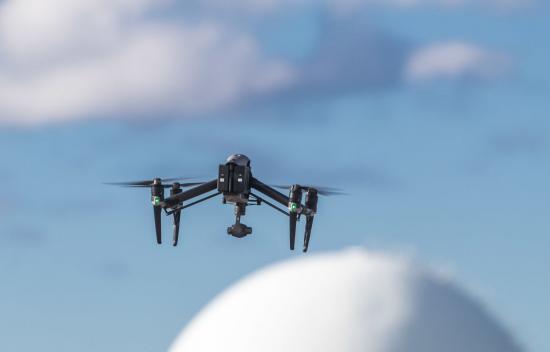
Drone technology is helping Dounreay reduce the risk of accidents and save money on its inspection of buildings. A camera mounted on an unmanned aerial vehicle is taking over tasks previously carried out by workers on elevated work platforms.
Falls from height are recognised as one of the biggest causes of death and serious injury in UK workplaces, so the switch to drone technology means staff can carry out inspections while keeping their feet firmly on the ground.
Dounreay Site Restoration Limited (DSRL), the company in charge of decommissioning the nuclear site, carries out about 50 inspections a year of buildings that continue to play an important role in clean-up and waste management functions. It estimates manpower savings of £100,000 as a result of the switch to drone technology.
John Moar, a senior electrical engineer at the site, is behind the initiative. His long-standing personal interest in aerial photography prompted research into whether drones could be deployed at the site, given it falls within a strictly enforced air exclusion zone and is protected by robust physical protection measures including armed officers from the Civil Nuclear Constabulary. After investigating the rules and technical requirements, including nuclear site regulations, he persuaded the company of the potential benefits in both health and safety as well as cost. John undertook a course run by a Civil Aviation Authority authorised training company and secured a specific exemption from the no-fly zone.
DSRL spent £6,000 on a drone - and John says the results so far have been very impressive. Its first deployment was to carry out an inspection of two 20-metre high stacks for a project to modernise the ventilation of a facility. Previously, this would have required the site to erect scaffolding and hire a mobile elevated work platform at a cost of thousands of pounds a week.
"The project manager was delighted at the quality and detail of the images and how easy and safe it was to get them," said John. "It also gives us 360 degrees inspections, which often isn't possible when doing the inspection manually. Clearly there are very strict rules in place to protect the safety and security of nuclear sites, so we had to follow a detailed process to get all required agreements.
John is now passing on his skills to a team from the site's maintenance department who are being trained by an authorised trainer to operate the drones. He says the images obtained from the aerial surveys will improve the quality of the site's building maintenance programme and enhance professional structural surveys.
"It also has the potential to develop applications in other areas, such as 3D modelling, thermographic, environmental and land remediation surveys, and PR footage."
Dounreay's tallest structure is 55 metres high. The drone can fly up to heights of 120 metres.
Dounreay is being decommissioned under a contract with Cavendish Dounreay Partnership Ltd(Cavendish Nuclear, CH2M Hill, URS) - Contract awarded 2012.
Related Businesses
Related Articles
TAE Technologies and UKAEA partner to commercialise fusion tech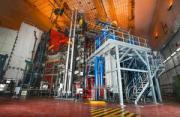
Joint venture to develop neutral beams for fusion and non-fusion applications, creating high-skilled jobs and establishing a critical supply chain. TAE Technologies, a leading US private fusion energy firm with over 25 years at the forefront of scientific innovation, today announces a bilateral and reciprocal investment commitment with the United Kingdom's national fusion laboratory, the UK Atomic Energy Authority (UKAEA) to commercialise TAE's proprietary particle accelerator technology for the global market.
Buried Hazards, Unfinished Business - What the NDA's 2025 Progress Report Really Tells Us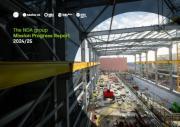
The Nuclear Decommissioning Authority (NDA) has released its 2025 Mission Progress Report is a slightly sprawling document chronicling one of the UK's most complex environmental undertakings. The safe dismantling of its early nuclear legacy.
New recruit officers join the Civil Nuclear Constabulary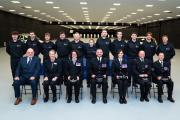
The Civil Nuclear Constabulary (CNC) welcomes its newest recruits. The CNC hosted two passing out parades for the graduating Authorised Firearms Officers (AFOs) of Initial Foundation Programme (IFP) 106.
Dounreay's next generation of talent honoured by apprentice award
Nuclear Restoration Services Dounreay's Kate Thomson has won Modern Apprentice of the Year at the Highlands & Islands Apprenticeship Awards in Inverness. Kate, who is in the second year of her apprenticeship in commercial and quantity surveying, said she was thrilled by the honour.
Taskforce calls for radical reset of nuclear regulation in UK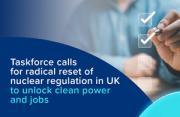
Nuclear Regulatory Taskforce publishes final report and calls for radical reset of overly complex nuclear regulatory system. An overly complex nuclear regulatory system has contributed to the "relative decline" of the UK's ability to deliver faster and cheaper nuclear projects.
Funding approved for Wick Harbour port consultant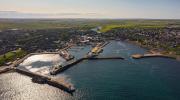
A specialist ports consultant has been appointed to develop a long-term strategic plan for Wick Harbour Authority (WHA) in Caithness. WHA has secured £47,775 from Highlands and Islands Enterprise (HIE) and the Nuclear Restoration Services, NRS Dounreay towards the cost of the services.
Fallon Campbell From Melvich Near Thurso Named As Apprentice of the Year At Awards In London
Rising star from North Scotland honoured at event to celebrate brightest and best in industry. An electrical apprentice from North Scotland is celebrating after being recognised for her contribution to industry at the 13th annual Engineering Construction Industry ECI Training and Development Awards in London.
The NDA Group Graduate Programme: more than a job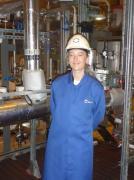
The NDA group graduate scheme offers far more than just a stepping stone into the nuclear industry; it's a chance to grow professionally, explore new places, and become part of a supportive community. Nuala Ledward, Assurance and Performance Graduate, shares how her secondment to Dounreay brought these benefits to life.
UKAEA develops 3D printing for fusion components
At its recently opened Central Support Facility (CSF), UKAEA has commissioned an electron beam additive manufacturing machine that can be used to incorporate tungsten into components, alongside a selective laser manufacturing machine. Fusion can play a key role in a global low carbon energy future.Advancing Fusion Remote Maintenance: Industry Collaboration Driving Innovation
As part of the Fusion Futures (FF) programme, UKAEA's Remote Applications in Challenging Environments (RACE) has partnered with industry leaders to develop two groundbreaking technologies for remote maintenance in fusion energy engineering. Thanks to FF funding, industry has taken the lead in maturing UKAEA technology concepts—delivering real-world solutions that enhance operational autonomy and reduce maintenance burdens in extreme environments.
